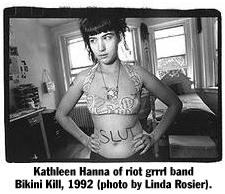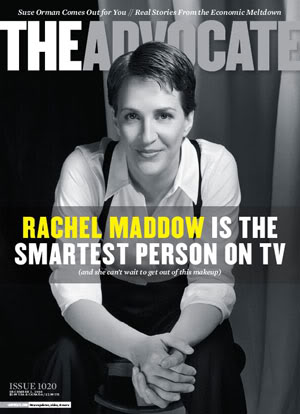For one of my classes this summer, I had write annotations/summaries for several books. I enjoyed many of them and I thought that the annotations might be useful for other people, so I will be posting them here. They’re somewhat rough, but considering how much everyone loves when someone at FtB posts about feminism, I doubt it matters.
—
Susan J. Douglas is one of my new favorite writers. She is clever, into pop culture, and one of the funniest academic writers out there. Her book Enlightened Sexism is one I highly recommend if you are interested in television culture, Buffy the Vampire Slayer, Xena, or good writing.
Douglas, Susan J. Enlightened Sexism: The Seductive Message that Feminism’s Work is Done. New York: Henry Holt, 2010.
Question(s) Investigated: What do representations of women’s power in the media mean? Is feminism’s work over because we see powerful women in the media? How are women’s interests being harmed by the media? What harm is done by spreading the belief that sexism is over and feminism’s work is done?
Time Period: 1990s-2000s
Geographic Region: US
Subjects studied: Media portrayal, stereotypes, equality, beauty
Place in the literature: This is a very recent book, but it is an important response to reactionary anti-feminism and claims that the world is post-feminist. Despite many claims to the contrary, Douglas claims that feminism’s work is not done, and the lie that it is done has caused ground to be lost in the fight for equality. Partially a call to action and partially a denunciation of those who claim that the fight is over.
Abstract:
CH1 – Teenage Girls
The focus here is that teenagers, particularly teenage girls, became an important demographic in the 1990s. Beverly Hills 90210 became the most popular television show for young women in the 90s, along with shows like Melrose Place and Murphy Brown. Depiction of women in these shows generally were stereotypical, either of superficial women who used sex to get power or women who were too busy with their careers to have lives. Women were always beautiful. Even in shows that were theoretically empowering, like Murphy Brown, employed tropes like motherhood was “natural” for women and careerism was not (40).
Interestingly, shows with strong female leads were highly rated, even when they did not have traditionally attractive women as leads: Roseanne, Designing Women, Murphy Brown, Murder She Wrote, and Grace Under Fire (43).

Douglas then goes on to talk about the magazine “Sassy,” which she is a fan of and which, frankly, I’m upset I didn’t have when I was a teenager, it sounds pretty amazing. An article went backstage to reveal the codes used behind the scenes at Miss America: WC, H, BB for Weak Chin, Heavy, and Big Butt (48). The chapter also addresses the problem of being a teenage girl: “if they behave like true adolescents, they can’t be feminine, and if they adopt the mantle of femininity, they aren’t really adolescents.” (53). The briefly powerful moments of Riot Grrrl and “Sassy” were immediately co-opted by major media outlets and tamed into something profitable and not good for women.
CH2 – Violent Women
Framed within news stories surrounding destructive women like Lorena Bobbitt, Amy Fisher, Tonya Harding, and Janet Reno, this chapter focuses on the anxiety around changing/evolving gender roles. The stories in the media reflected themes in TV and film at the time (56).
“Enlightened sexism rests on that ever-quaking and shifting fault line about female sexuality: it should be exploited and stoked (especially to sell products) but it should be policed and punished (to keep girls and women in their place)” (57).
I was 8 when Amy Fisher was news, and I never heard anything about it. I was 9 when the Bobbitt’s were news and there were lots and lots of penis jokes. I didn’t realize how young they were, she was only 22 when she attacked her husband. Also, this is the picture I found of her when Googling:

This chapter is about Warrior Women like Xena and Buffy with whom “we saw the proliferation of a new kind of heroine, a sexy, mouthy, physically violent ass-kicker whose duty it was to save the entire world from really monstrous evildoers” (77). In the 90s, feminist concerns had moved from explicit discrimination, particularly in the work place, to sexual politics and more subtle discrimination and personal violence (79).
And then there was Charlie’s Angels, which brought back women using their sexuality to defeat men. And then La Femme Nikita, which included the line “there’s no weapon as powerful as your femininity” (95). Dark Angel emphasized that female sexual desire was dangerous, by having the lead go into heat (96).
CH4 – Feminism as Ugly
Focuses on media that dismisses feminism as a thing of the past or unattractive. Clueless heralded the beginning of female narrated films, but those narrations came with a focus on “girly” things like fashion and whether boys wanted them. And this happened at the same time as the warrior women (104). The idea of essentialism, that women and men were fundamentally different, was promoted (105).
She goes on to discuss Ally McBeal, which managed to be both feminist and anti-feminist; Miss Congeniality and Legally Blonde, which were about balancing feminism with girliness; Down with Love, which implies that women aren’t really feminist they just want men to be good to them.
CH5 – Black Women

Black women earn “62.5 cents to every white man’s dollar (in Louisiana it’s 48.9 cents to his dollar)” (130). Even as representation of women got more complex in general, it embraced stereotypes of black women, such as in shows by Martin Lawrence (141) and crime shows generally (144).
Douglas writes at length about Oprah. “Oprah and her audience construct a fantasy, a utopia where white and black women come together as allies and friends. And how many black women, besides Oprah, have launched a magazine named after them, featuring herself on the cover every month, and have it be a hit with white women?” (147). Although Oprah herself is committed to helping people, she focuses on individual self-improvement in a world where not everyone with the will to succeed necessarily will, these problems “can’t be overcome simply by pulling up your bootstraps or finding your spiritual center” (150).
CH6 – Sex in America
This chapter is about American sex culture and how it focuses on women and very young ones at that. There is a “culture that is prudish and pornographic – how’s that for a contradiction to navigate?” (155). She introduces the idea of the “sexpert”, someone who is an expert at sex and openly talks about it – sexual empowerment got twisted into self-objectification (156).

CH7 – Television
According to her, “a close look at reality TV reveals it to be the ground zero of enlightened sexism” (189). She discusses several different television shows and then, from pages 198-210 offers the top 10 sexism in action:
- Women are to be judged first and foremost by their appearance
“if you’re beautiful, you have it knocked – all else will follow. But at the same time they show us that we can never be beautiful enough… such shows provide an excellent selling environment for the multibillion-dollar diet and beauty industry…” (201).
- Women need to compete over men
- Women can’t get along with one another and will stab each other in the back
- Women are overly emotional and obsessed with relationships
- Women should be sexy, but not overly sexual
- The worst thing a woman can be is a bitch: strong women are bitches and rich women are bitches
- African-American women are lazy, threatening, have a chip on their shoulder, are not marriage material, or all of the above (except for Tyra Banks)
- Women (especially blondes) are shallow, materialistic, and live to shop
- Housework and child rearing are a woman’s domain
- Lesbians? What lesbians?
Reality TV resurrects these stereotypes, leads to approval of them, lets women know how they are judged on appearance.
CH8 – Dieting
This chapter is about the rise of diet culture and the mean girl culture. Women failing to live up to the ridiculous standards of beauty, requiring extreme thinness and giant breasts, has lead to them being angry, and they turn that anger inward and towards each other rather than at the media (220). She complains about the increased spending on cosmetic surgery and the focus on cosmetic surgery in television – I would point out that, like many medical fields, the technology and results have improved massively over time and the costs have come down, I’m not sure it’s reasonable to entirely blame this growth on a change in the media landscape. It is certainly based on a beauty ideal that is unattainable, but that ideal has existed all along.
She then goes on to address the mean girl phenomenon, something that isn’t new and isn’t particularly widespread, despite the focus on it. She argues that the focus is to create the idea that women themselves are the problem, not the culture, and women need to be put back into their place because they can’t do that for themselves (236-237).
CH9/CH10 – Celebrity Culture

She also writes about the lack of representation of lesbians in the media, with the exception of the occasional straight girl make-out session (290). She mentions Ellen and Rachel Maddow, but argues that their sexuality remains in the background, but I think that this isn’t true – they both speak often about LGBT issues and certainly their sexuality more openly impacts what they report on than most people with talk or news shows. Her point about fictional representation stands, though. The root problem is that lesbians are politicized and anti-consumerism (291).
Resources used:
Ariel Levy, Female Chauvinist Pigs: Women and the Rise of Raunch Culture (New York: Free Press, 2006)
Rosalind Gill, Gender and the Media (Cambridge, UK: Polity Press, 2007).
Angela McRobbie, The Aftermath of Feminism (London: Sage, 2009).
Kara Jesella and Marisa Meltzer, How Sassy Changed My Life: A Love Letter to the Greatest Teen Magazine of All Time (New York: Farrar, Straus and Giroux, 2007).
A. Susan Owen, “Vampires, Postmodernity, and Postfeminism: Buffy the Vampire Slayer,” Journal of Popular Film and Television 27 (Summer 1999).
Dawn Heinecken, The Warrior Women of Television (New York: Pete Lang, 2003).
Kristal Brent Zook, Color by Fox (New York: Oxford University Press, 1999).
Laura S. Brown, “Outwit, Outlast, Out-Flirt? The Women of Reality TV,” in Featuring Females: Feminist Analyses of the Media, ed. E. Cole and J. H. Daniel (Washington, DC: American Psychological Association, 2005).
Jackie Stacey, “Feminine Fascinations: A Question of Identification?” in The Celebrity Culture Reader, 252-85.
Amanda Lotz’s work in general







